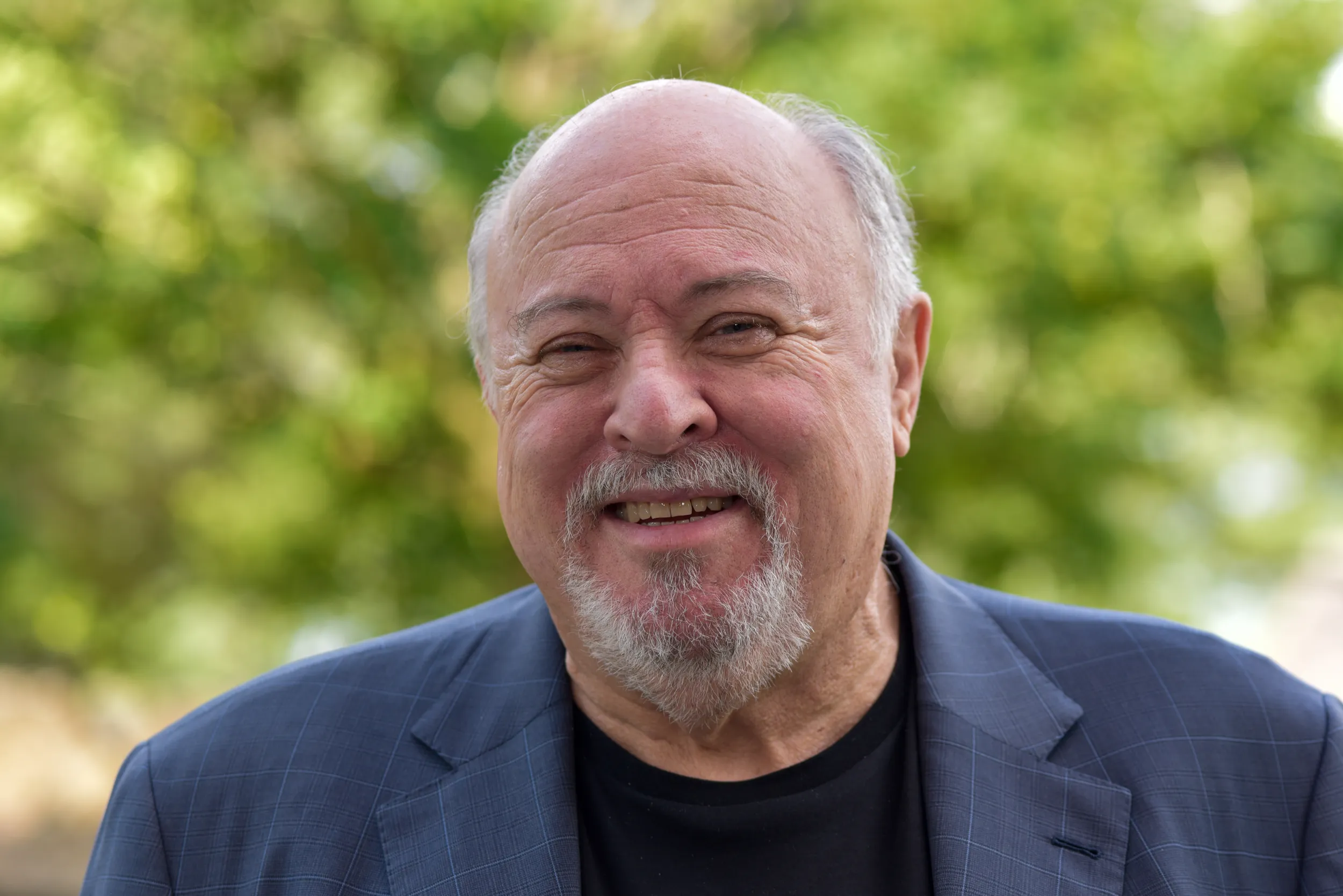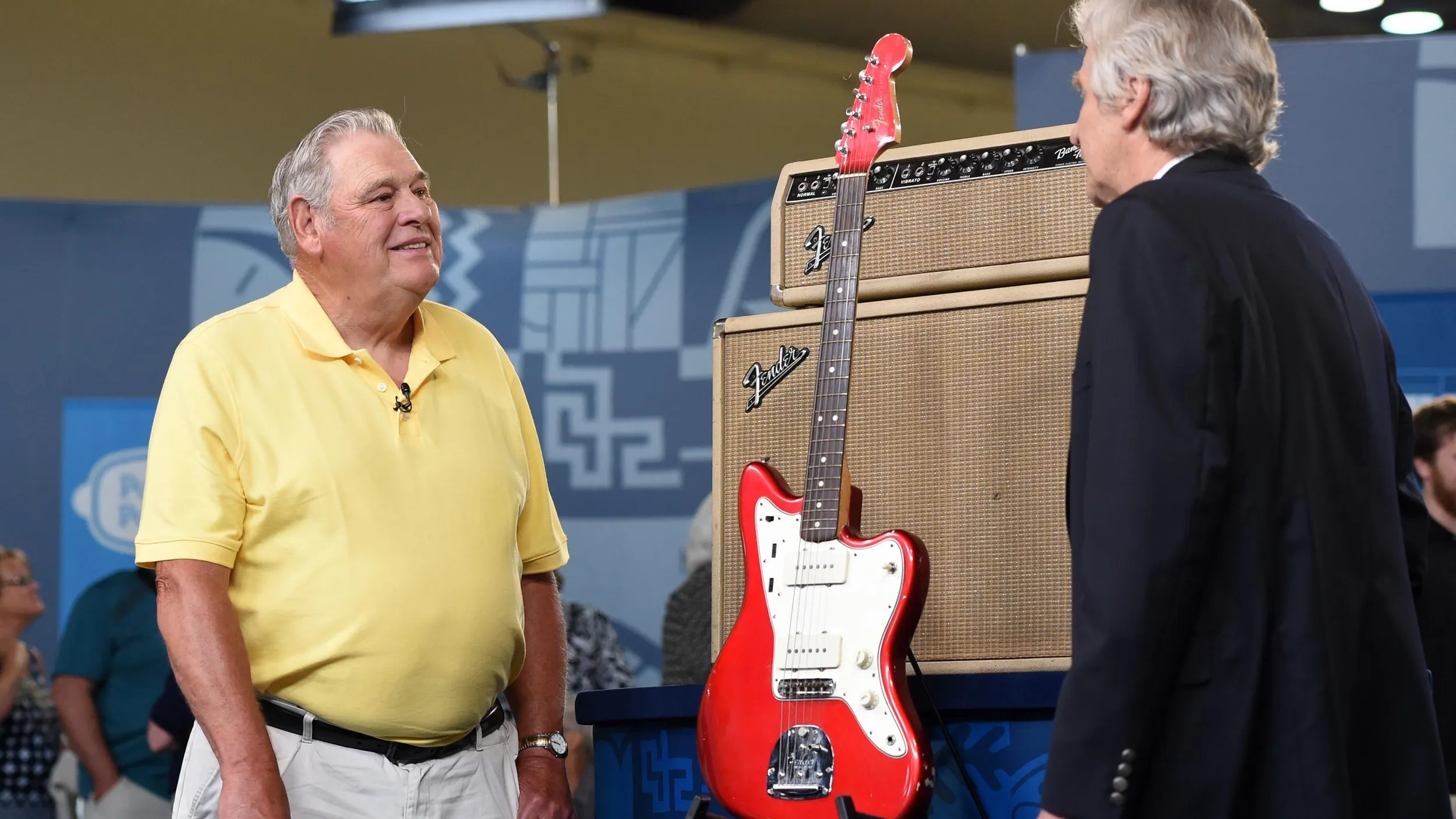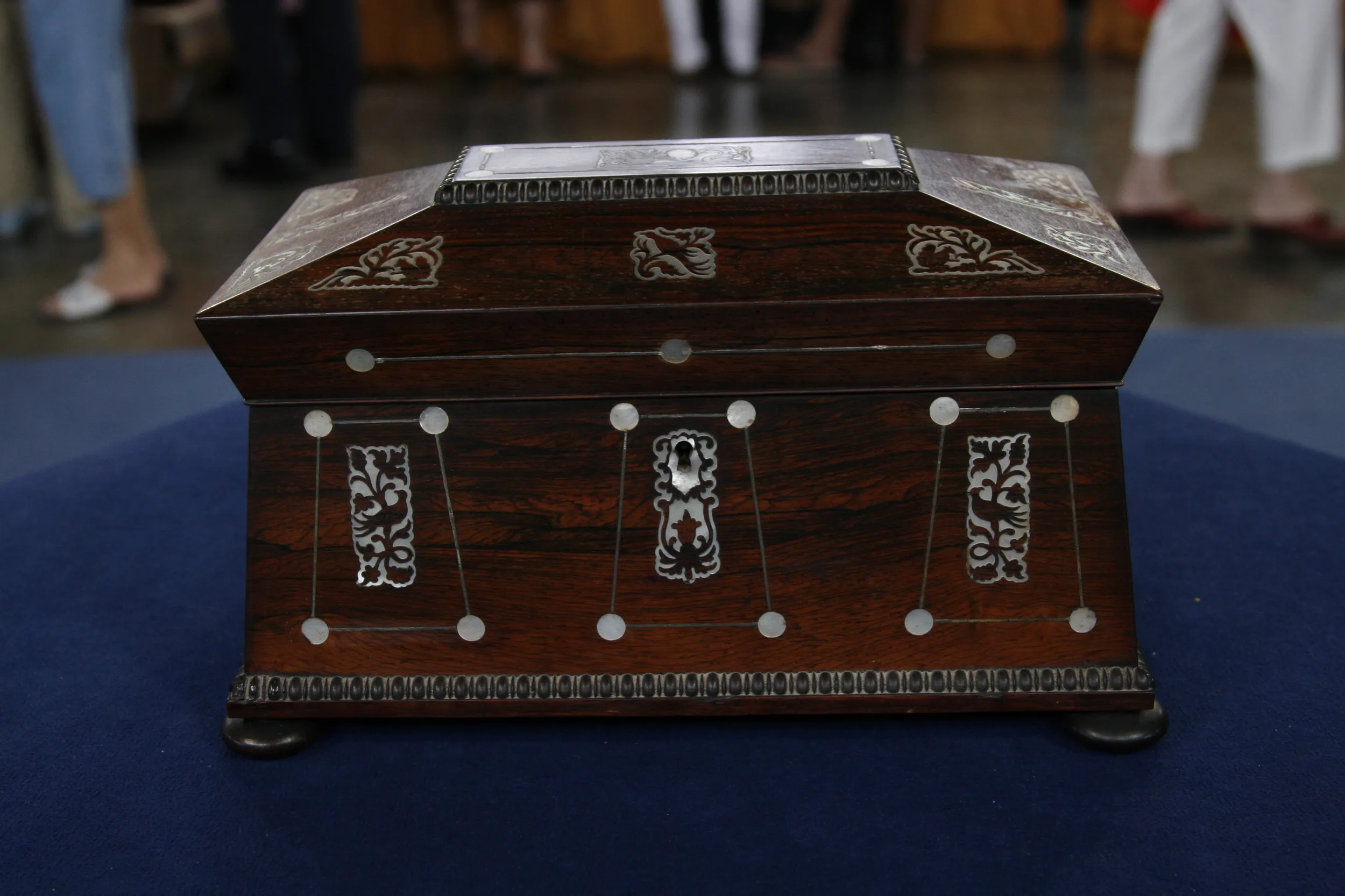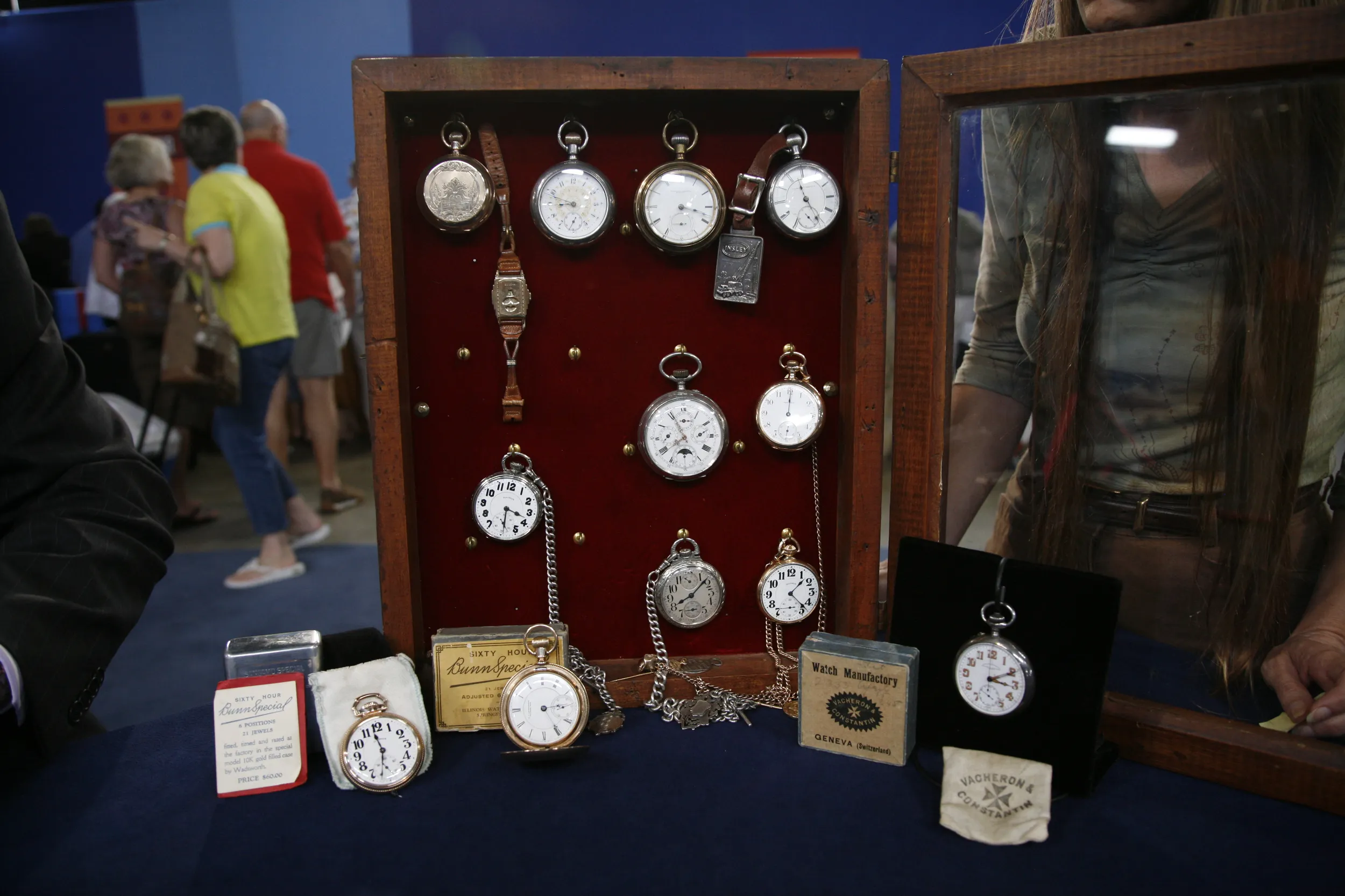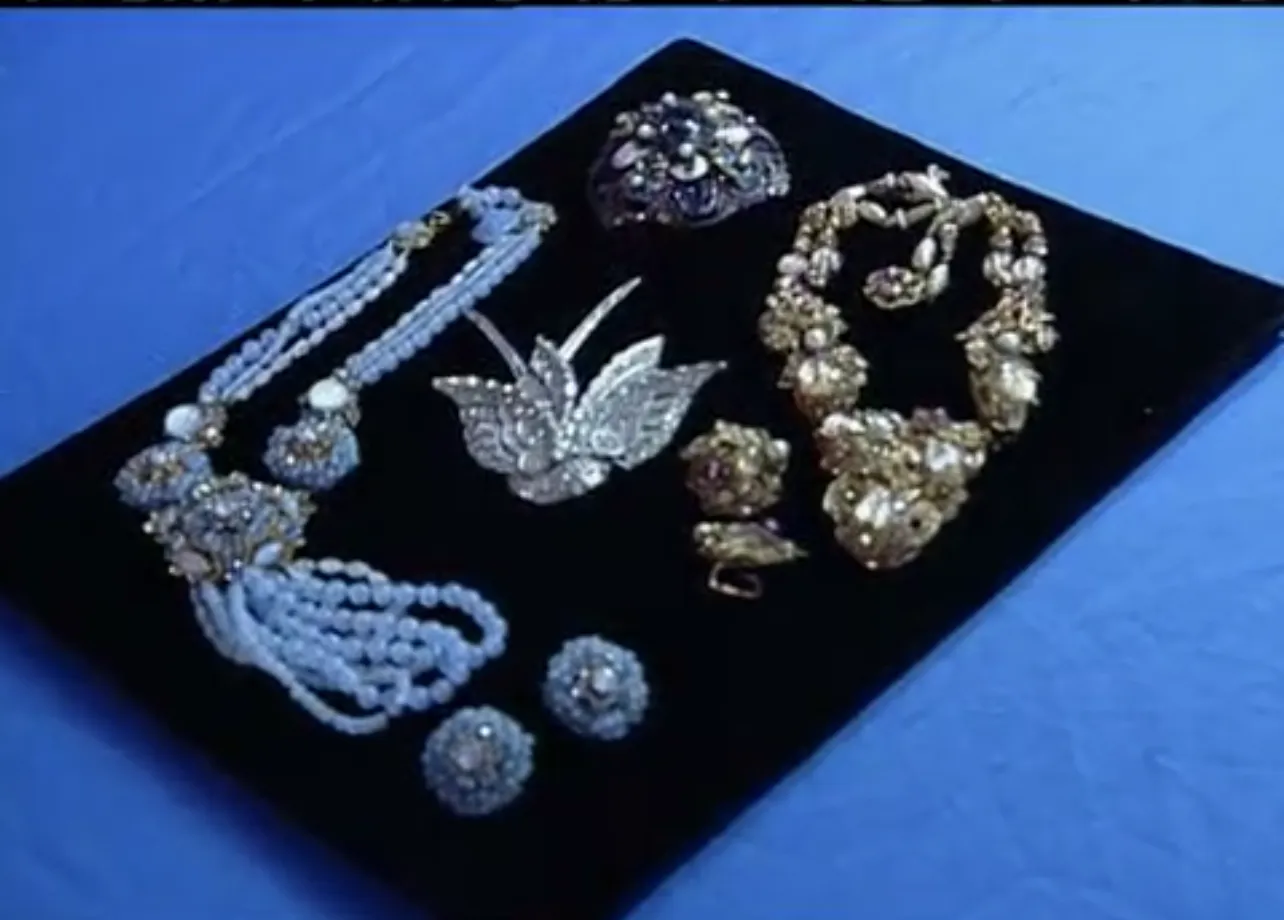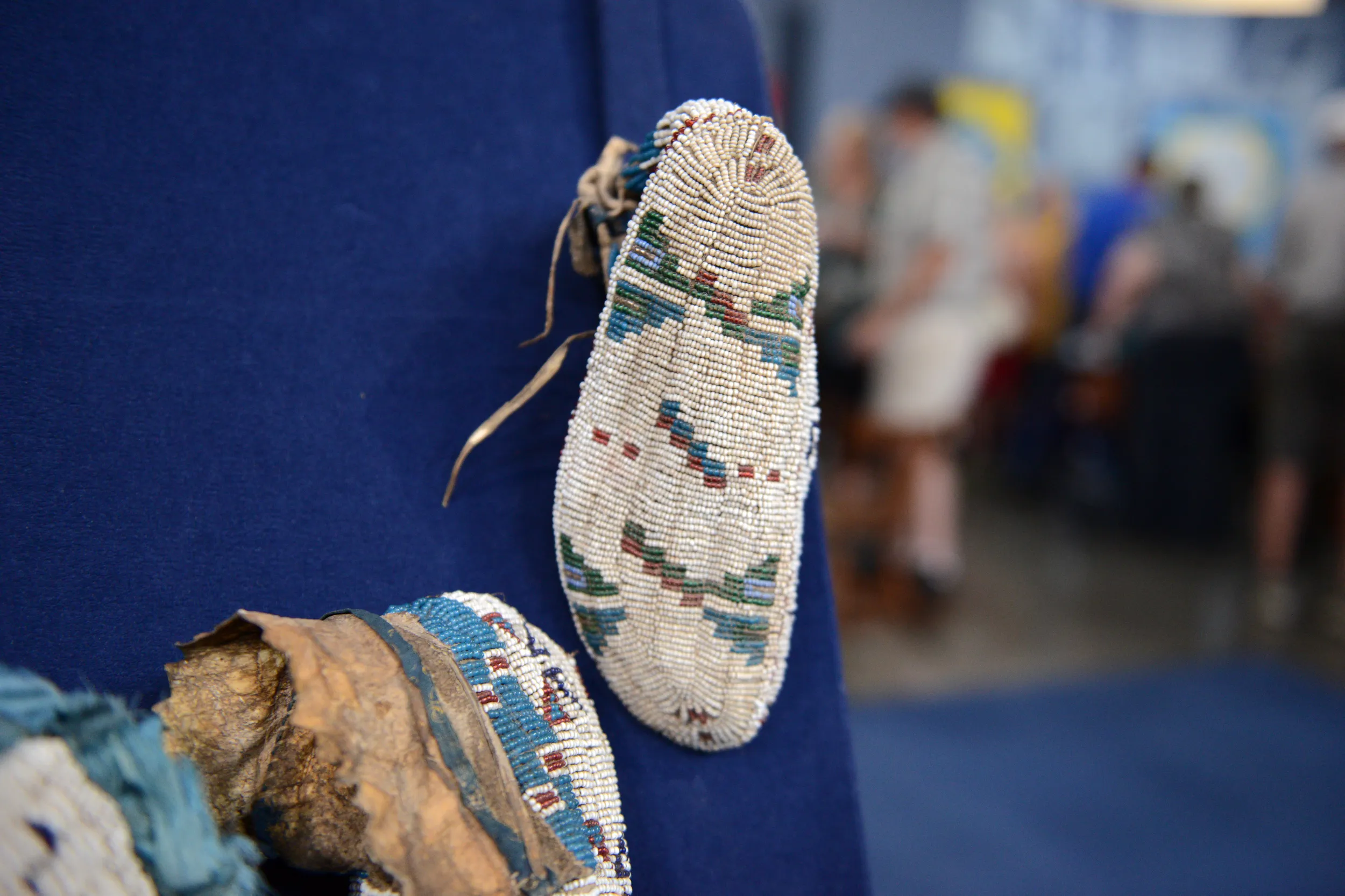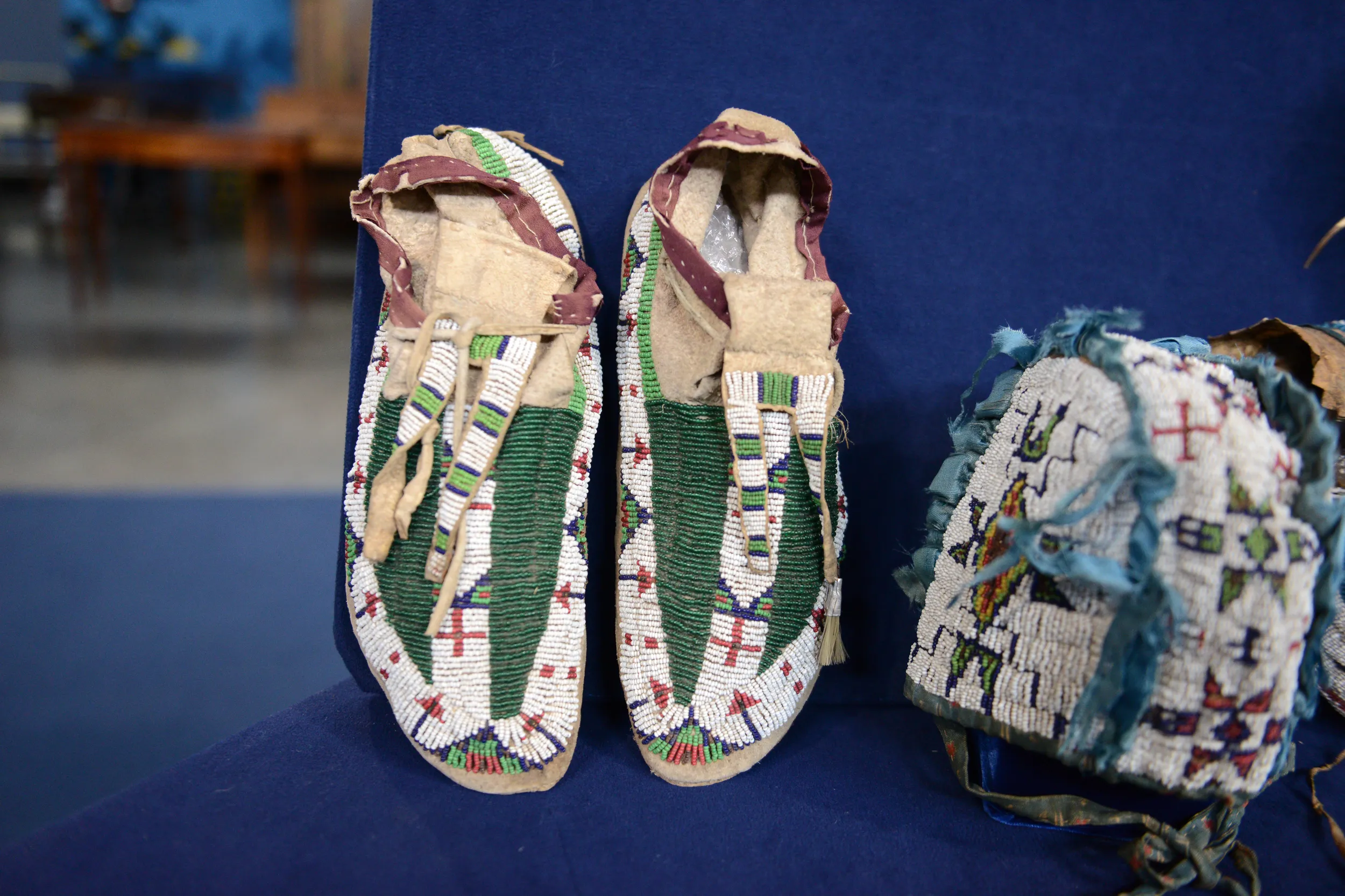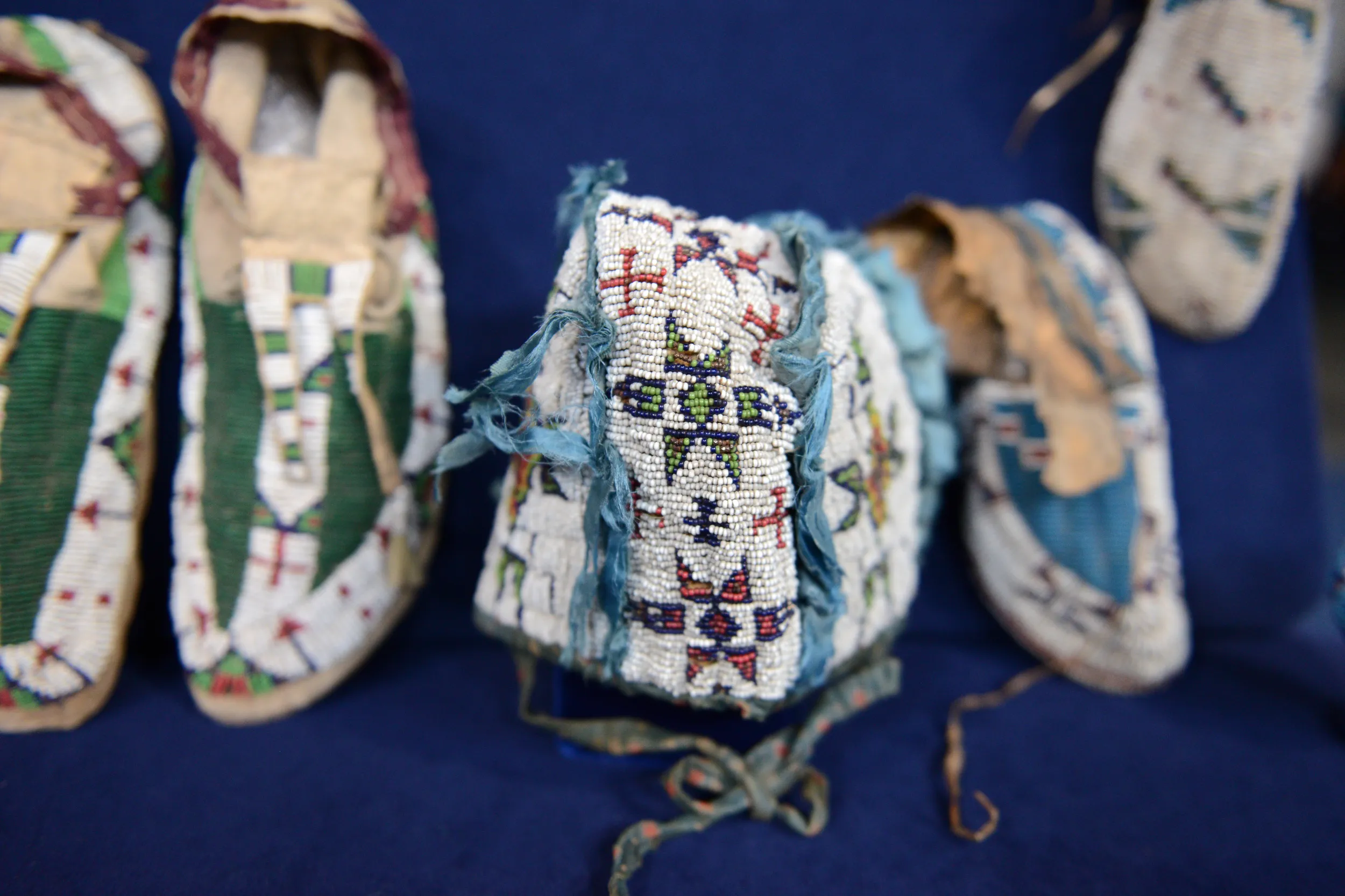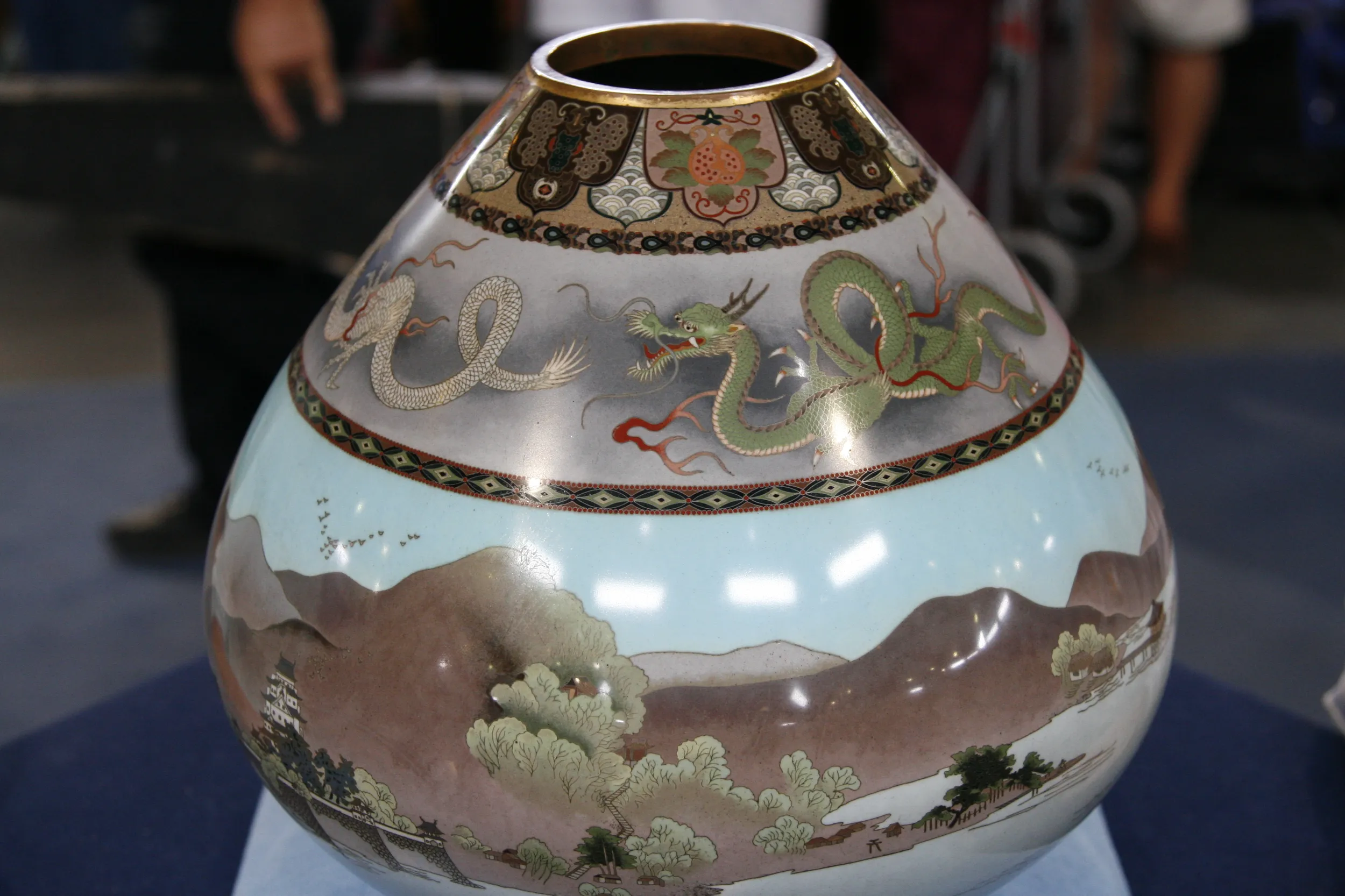GUEST: I know absolutely nothing about any of them except for the ball. The ball was a gift from my grandmother. I was born on an Indian reservation in eastern Montana. My family received one when a child is born, and so I was given mine I think-- well, I'm 53, so probably at least 50 years ago.
APPRAISER: And the other pieces, how did you get those?
GUEST: I bought them at an auction and there was a large collection of them that I bought, and I just... I don't know anything about them. I liked them and at the time it was kind of a whim, and just decided to go for it.
APPRAISER: And how much did you pay at that auction for these moccasins and the bonnet?
GUEST: I'm not exactly sure how much, because it was a much larger collection. I think it was $5,000? I bought them in, I think, 1998.
APPRAISER: Did you grow up around beadworking?
GUEST: Well, we saw it a lot. You know, they have the different tribal ceremonies and whatnot, and I always thought that was beautiful, so.
APPRAISER: So did you go to the grass dances in the summer and all that?
GUEST: We did all of it, yes, I did spend my summers in Froid, Montana, where my grandmother lived.
APPRAISER: So are you Oglala or...
GUEST: (laughing) Well, I'd like to say I am, but the tribe when I was born had just stopped the roll books, so I have a brother and sister that are registered Native American, and my sister and I-- my younger sister-- are not. (laughs) So it's a very strange situation.
APPRAISER: That's really interesting. The two pairs of moccasins and the little baby bonnet, they're Lakota.
GUEST: Oh, okay.
APPRAISER: So they're from east of the Oglala people.
GUEST: So maybe more the Rosebud reservation.
APPRAISER: Yeah.
GUEST: My husband is actually from that.
APPRAISER: Oh, really?
GUEST: Yeah, that's where his mother was born.
APPRAISER: So this is very connected.
GUEST: Yeah.
APPRAISER: This is all beadwork that was made between about 1890 and 1910.
GUEST: Okay.
APPRAISER: This is typical of that area. This is silk ribbon and it's starting to shatter.
GUEST: Right.
APPRAISER: There's not a lot you can do about it. These are a little unusual in that they're beaded on the bottom.
GUEST: Yeah, I was wondering about that. I kind of figured they were ceremonial of some sort or...
APPRAISER: Ceremonial's good. They call them burial moccasins.
GUEST: Oh!
APPRAISER: But they're not.
GUEST: (laughing) Oh, okay.
APPRAISER: From what I know of what really got it started was when a young man would get married, he was the show.
GUEST: Okay.
APPRAISER: And he would be carried in by all his buddies on a big buffalo robe or on a blanket. And they would make these moccasins that were beaded on the bottom.
GUEST: Oh.
APPRAISER: What really interested me about this is it's got a little animal fetish. It's probably a lizard or a turtle on the bottom of this.
GUEST: I have no idea what it...
APPRAISER: And while the Sioux were great about making little umbilical charms.
GUEST: Okay.
APPRAISER: That were usually in the form of a turtle or a lizard.
GUEST: Oh.
APPRAISER: And so it's neat that this ball made for your birth would have the same symbol on the bottom. In the old days, they were stuffed with buffalo hair. And I don't think this one is. I can't imagine it. I think it's something else. As far as value, the moccasins, these are worth $800 to $1,200.
GUEST: Oh, okay.
APPRAISER: These are worth $1,400 to $1,600.
GUEST: Oh, very nice.
APPRAISER: This is probably worth $800 to $1,200.
GUEST: Mm-hmm.
APPRAISER: So $2,400 for these pieces, $3,400, $4,000 and probably $400 to $600 for this.
GUEST: (laughing) Oh, seriously.
APPRAISER: Yeah.
GUEST: Really?
APPRAISER: Yeah.
GUEST: (laughing) I would've thought it had no value.
APPRAISER: Yeah, no, $400 to $600.
GUEST: Oh, wow, oh, very exciting.
APPRAISER: Especially it's so beautiful. That's in an auction, that's not in a shop.
GUEST: I love it. Like I said, my... it's sitting out on a shelf.
APPRAISER: Well, it's family stuff, and you can't put a value on that.
GUEST: Right, no.
